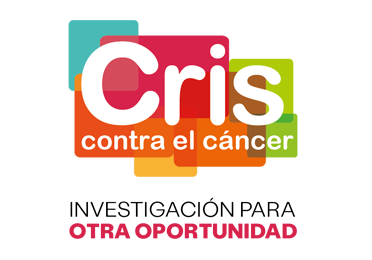
- The main conclusion drawn from the data is that the greater the expression of PD-L1, a protein that acts as a brake on the immune system, the greater too is the efficacy of pembrolizumab.
- Specifically, this monoclonal antibody, alone or combined with chemotherapy, improved overall survival compared to conventional treatment in patients scoring equal to or over 1 on the combined positive score, a scale used as a biomarker for quantifying the presence of the PD-L1 protein in tumours.
- The biomarker analysis presented in this article, published in the Journal of Clinical Oncology, has been used by the European Medicines Agency (EMA) to approve first-line use of pembrolizumab with or without chemotherapy, marking a change in the first-line treatment for this tumour.
Barcelona, 6 April 2022– Pembrolizumab, a monoclonal antibody which binds with the protein PD-1 to help immune cells destroy more cancer cells, is seeing a steady increase in its indications. Now, the KEYNOTE-048 phase III clinical trial, involving researchers from the Vall d’Hebron Institute of Oncology (VHIO), part of Vall d’Hebron Campus, has shown that its first-line use, in monotherapy or combined with chemotherapy, improves outcomes in patients with metastatic or recurrent head and neck squamous cell cancer that expresses PD-L1. Specifically, it benefits patients with a combined positive score (CPS) equal to or over 1, which includes 80-85% of such patients. The study also shows that the greater the CPS, the greater the benefit of pembrolizumab, alone or combined.
The data from this study, which has just been published in the Journal of Clinical Oncology, is so significant that it has led to the approval of pembrolizumab, alone or in combination, for such patients by the European Medicines Agency (EMA). “This represents a major change in clinical practice, which will help us in selecting first-line treatments. It should be remembered that since 2008 there has been no change in this first-line for patients with head and neck squamous cell cancer patients, who were therefore in need of new alternatives”, explains Dr. Irene Braña, oncologist in the VHIO Thoracic Tumour and Head and Neck Cancer Group, director of Dr. Enriqueta Felip, one of the authors of the study, which received support from a Río Hortega contract from the Carlos III Health Institute.
In total, the study compiled data from 882 patients with recurrent or metastatic head and neck squamous cell cancer, who were divided into three random groups. One of the groups received monotherapy with pembrolizumab, the second received combined pembrolizumab and chemotherapy and the third group, who acted as the control, received the current standard treatment of cetuximab and chemotherapy.
The greater the PD-L1 expression, the better the results
The data analysis considered the patients’ CPS, an indicator that helps determine the amount of PD-L1 in tumours and infiltrated immune cells. It is calculated by measuring the number of cells showing PD-L1 staining (tumour and immune system cells), which is divided by the total number of viable tumour cells. This value is then used to subdivide patients into those with a CPS under 1, those with a value from 1 to 19 and those with a value equal to or over 20.
What was generally observed was that there was no benefit from pembrolizumab administration for patients with a CPS under one. However, survival started to increase when this figure rose. “In this study, we observed a clear relation between PD-L1 expression and the increase in survival. The higher the CPS, the greater the benefit from pembrolizumab administration, alone or combined with chemotherapy”, explains Dr. Irene Braña, who is also an oncologist at Vall d’Hebron University Hospital.
Thus, general survival in the group receiving pembrolizumab with a CPS from 1-19 was 10.8 months, compared to 10.1 among those receiving cetuximab and chemotherapy, while survival for chemotherapy combined with pembrolizumab was 12.7 months. “For the first time, we are seeing survival rates of over a year, which is a major advance. These results support previous findings on the benefit of pembrolizumab monotherapy and of chemotherapy with pembrolizumab in patients with PD-L1 tumours with a CPS over 1, which helps us select the best therapeutic strategy for patients”, adds Dr. Braña. She also points out that, despite PD-L1 expression being informative, new additional predictive biomarkers for head and neck squamous cell cancer with low PD-L1 expression and new combinations to further improve results still need to be explored.
“The KEYNOTE-048 study has opened the door to first-line immunotherapy treatment for our patients with head and neck squamous carcinoma. Following on from the patients who received immunotherapy in this study, a further 53 patients have received first-line immunotherapy thanks to the clinical trials”, notes Dr. Braña.
About head and neck squamous cell cancer
Head and neck squamous cell cancer is the sixth most common neoplasm worldwide, representing 6% of all cancer cases. It is responsible for between 1 and 2% of cancer deaths. In Spain, this kind of tumour represents 5% of all new cancer diagnoses in adults and is the sixth most common (or fifth in the case of men), with a incidence similar to the European average, of 43 cases per 100,000 inhabitants.
Over 90% of head and neck cancers are squamous cell carcinomas which start in the mucous-covered epithelium of the upper airway and digestive tract. Classic risk factors are smoking, alcohol, male sex and old age, to which has been added human papillomavirus infection in recent years.
Treatment options for these patients vary depending on the stage and clinical scenario. Patients with a local or locally advanced tumour are treated with potentially curative treatment using surgery and/or radiotherapy accompanied by chemotherapy or biological therapy. However, the recurrence rate in patients with early stage tumours is between 10 and 20%, while it ranges from 20% to 50% in locally advanced stages. Furthermore, around 10% of patients debut with metastatic disease.
In these situations of recurrent or metastatic cancer, combined cetuximab and chemotherapy treatment had provided the best results up to now. As Dr. Irene Braña concludes, “Now, thanks to the results of this study, we have a new alternative in which pembrolizumab plays a key role and increases treatment options, which is always positive news”.
Reference:
Burtness B, Rischin D, Greil R, Soulières D, Tahara M, de Castro G Jr, Psyrri A, Brana I, Basté N, Neupane P, Bratland Å, Fuereder T, Hughes BGM, Mesia R, Ngamphaiboon N, Rordorf T, Wan Ishak WZ, Ge J, Swaby RF, Gumuscu B, Harrington K. “Pembrolizumab Alone or With Chemotherapy for Recurrent/Metastatic Head and Neck Squamous Cell Carcinoma in KEYNOTE-048: Subgroup Analysis by Programmed Death Ligand-1 Combined Positive Score”. J Clin Oncol. 2022 Mar 25:JCO2102198. doi: 10.1200/JCO.21.02198. Epub ahead of print. PMID: 35333599.











